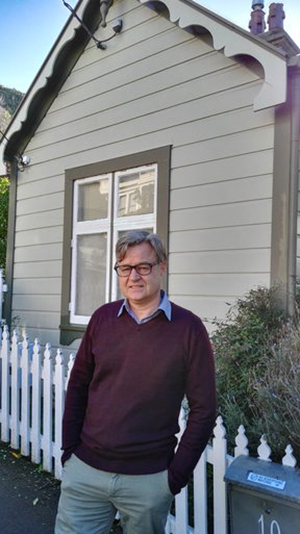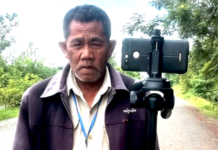
BOOKS: By Jeremy Rose of RNZ Mediawatch
It’s often been said there are just seven stories in all of literature. If a new collection of a 150 years of investigative journalism in New Zealand is any guide, investigative journalism has even fewer.
A Moral Truth: 150 years of investigative journalism in New Zealand opens with an extract from Te Hokioi, which the book’s editor, James Hollings, describes as the first truly independent Māori newspaper. The paper’s editor, Wiremu Patara Te Tuhi discovered on the eve of the Waikato Wars in 1863 that a large new “school” built by the government well within the King Country’s borders was in fact a military fort.

It was a case of a government and its military speaking the language of peace but involved in the machinations of war; a story that will be familiar to those who have read this year’s Hit and Run by Jon Stephenson and Nicky Hager.
James Hollings says Te Tuhi’s story has all the elements of good investigative journalism.
“It brought hidden facts to light, it verified those facts, it put those facts to the authorities at the time and questioned them. It was a remarkable piece of journalism.”
Another remarkable piece of journalism is Truth’s 1911 campaign to save the life of Tahi Kaka – a youth who the crusading newspaper was convinced had killed in self-defence but had been convicted of murder. There are discomforting echos of the Teina Pora story, which also features in A Moral Truth.
During its campaign to save Tahu Kaka, Truth revealed the identity of the nation’s hangman: Steven John Smart, of 10 St Mary’s St, Thorndon, Wellington.
Bricklayer was hangman
Being a hangman was a part-time gig and Smart worked as a bricklayer for the Wellington City Council. Truth reported that his continued employment became untenable once his co-workers discovered his role as the country’s part-time hangman and he was fired on the grounds that he hadn’t been entirely truthful about his absences.
Truth continued to campaign against the death penalty right up until it was finally abolished in 1961. And one of the most graphic and moving chapters in the book deals with the execution of Albert Black in 1955. The story is told with clinical detail. And the reader can’t but sympathise – not only with Albert Black but the Sheriff of Auckland who is unable to carry out the hanging due to having had a nervous breakdown following the previous two hangings.
“Careful planning goes into preparing a man who is to be hanged,” Truth wrote. “The idea is that he should be as a rigid log of wood as possible when he is dropped.
“For this reason he is dressed in a stiff canvas coat, and steps out of his own shoes into a pair of heavy boots.”
Individual miscarriages of justice account for 10 of the 33 chapters in A Moral Truth: 150 years of investigative journalism in New Zealand. Many of them will be familiar to New Zealand readers, Arthur Allan Thomas, David Dougherty and Louise Nicholas to name just a few.
Pat Booth’s dogged investigation revealed that the police had framed Thomas by planting a bullet casing in his garden. Incredibly, all these years later Arthur Allan Thomas is still waiting for an apology from the police.
So is there a danger that investigations into the likes of the Arthur Allan Thomas case end up being viewed by the public as real life whodunnit stories rather than examinations of systemic failures and sometimes outright crimes committed by those charged with upholding the law?
Dirty dairying
James Hollings doesn’t think so. “You can argue till the cows come home with people about what is the theoretical problem or the systemic problem but people don’t really notice or listen until you put a particular example in front of them.”
And speaking of cows, dirty dairying seems like a very 21st century story. The New Zealand of the 1970s is generally remembered as the a land of 70 million sheep with dairy cows as bit extras. The recently formed green movement largely concerned itself with the chopping down of the country’s native forests. But in 1972 Jim Tucker, then the chief reporter on the Taranaki Herald, spent six months walking around the region exposing the country’s most “dishonourable discharges” (to pinch the title of the chapter of the book dealing with Tucker’s work.)
Forty five years later Jim Tucker is working on a follow-up to that story.
And the damage caused by those seeking ever greater profits in under regulated environments continue to be a source of investigative stories. Rebecca Macfie is the author of Tragedy at Pike River: How and why 29 men died.
In the extract from the book republished in A Moral Truth, Rebecca Macfie shares the blame around for those 29 deaths:
“…a regulator that was submissive and unwilling to use the powers at its disposal; a board that was incurious, bereft of knowledge and experience of underground coal mining, and unable to see the symptoms of failure; management that was unstable, ill equipped for the environment, and incapable of pulling together all the piece of its own frightening picture, and a union that was marginalised and irrelevant.”
But what about the journalists? Was the fact that 29 men had to die before the gutting of the mining inspectorate became a political issue a failure of journalism?
“Yes that story was there to be told. And there was some quite live action on that story in the year or two before Pike blew up,” Rebecca Macfie says.
‘Kind of normal’
“In some ways I think we’d all got so used to deregulation and light-handed regulation by the late 2000s, that it was kind of normal. It wasn’t necessarily something that you would have seen as a problem for a brand new mining company like Pike was proposing to be.”
James Hollings, Jim Tucker and Rebecca Macfie all agree that investigative journalism is in good heart despite the difficulties being faced by media companies.
Rebecca Macfie says “There’s a lot of interesting work going on and in a lot of new places, like Newsroom, and a lot of the work that’s going on in the Herald – if you can only find it. If they didn’t just bury it on their website.”
And Jim Tucker adds: “There’s a lot of damn good journalism happening which suggests it’s more than just having resources. I think it’s an individual thing.”
Jeremy Rose is a Mediawatch and Sunday producer for Radio New Zealand.
- A Moral Truth: 150 years of investigative journalism in New Zealand (Massey University Press) is launched on Tuesday, August 8. This article is republished with permission from RNZ’s Mediawatch programme.













































